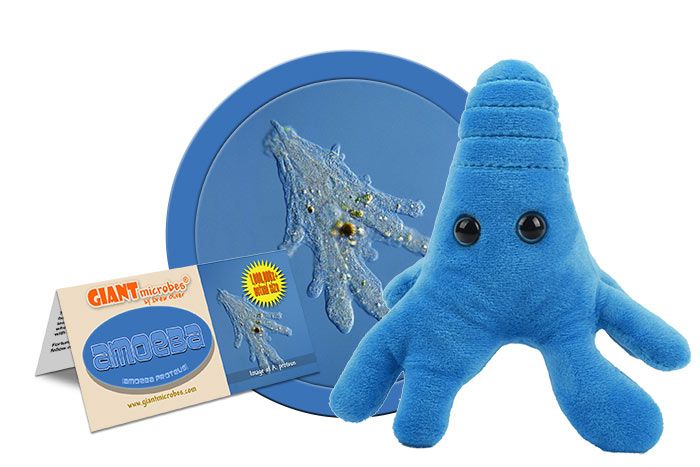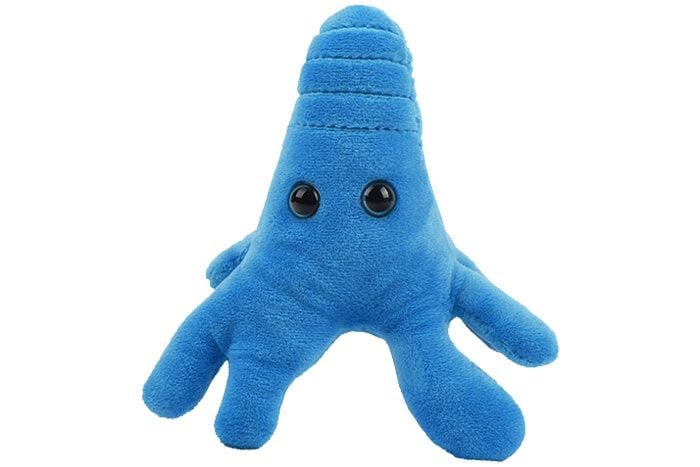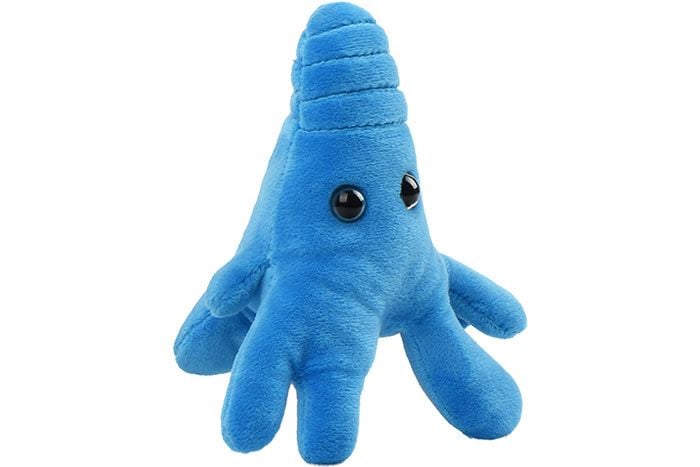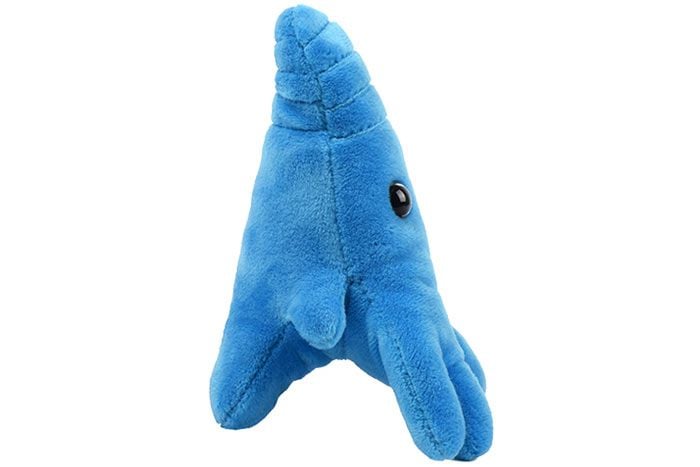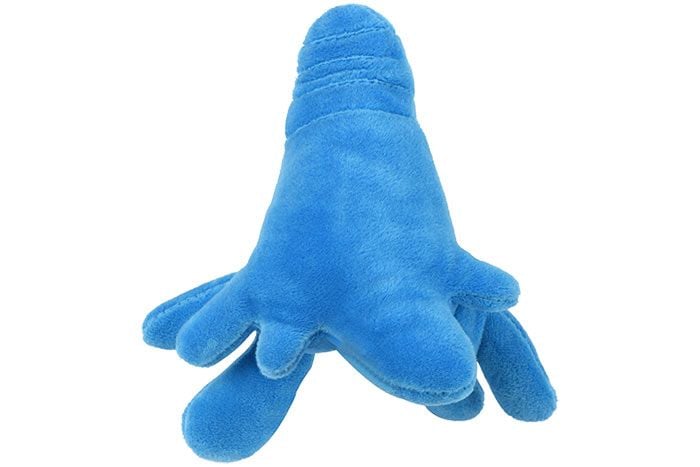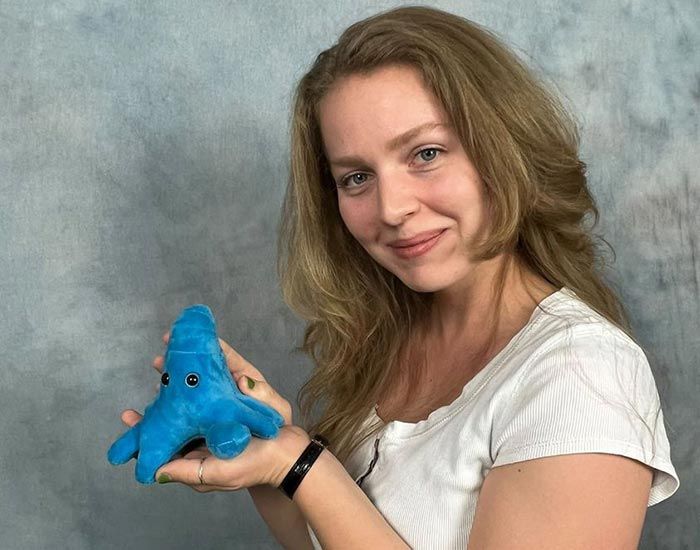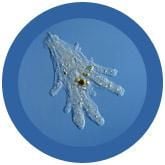Amoeba (Amoeba proteus)
Out of Stock
Amoebas are wonderful microscopic organisms that constantly change shape and color as they explore and engulf their environment. GIANTmicrobes Amoeba is soft, cuddly and provides a fun hands-on way to learn about microscopic life, nature and biology.
Memorable and educational gift for family, students, friends, educators, marine biologists, water lovers, scientists, explorers and anyone with a healthy sense of humor. Features detailed stitching, high quality materials and includes an educational printed card with fascinating facts about this wonderful creature.
Size: 5” x 5” x 5"
Product Details
Additional Information
| Sizes | Giantmicrobes are based on actual microbes, cells, organisms and other critters, only 1,000,000 times actual size! Gigantic (GG) 16-24" XL (XL) 10-15" Original (PD) 5-8" Keychain (KC) 2-4" with clip |
|---|---|
| Materials | Plush from all new materials. Stuffed with polyester fiber fill. Surface washable: sponge with water & soap, air dry. |
| Packaging | Each plush microbe includes a printed card with fun, educational and fascinating facts about the actual microbe or cell. |
| Safety | Every product meets or exceeds U.S. and European standards for safety. For ages 3 and up. |
All about Amoeba (Amoeba proteus)
FACTS: The word amoeba comes from the Greek word meaning “to change” – and Amoeba proteus was named after the Greek sea god Proteus who could transform himself to avoid being captured. One of the most common amoebas in the world, Amoeba proteus is constantly changing its shape and color as it explores (and engulfs) its environment!
First discovered in 1755, amoebas are now widely familiar one-cell creatures. They move by extending pseudopods ("false feet") and then oozing into them. This fantastic motion is achieved by the circulation of endoplasm and ectoplasm (interior and exterior gels) within the cell body – and it has long captured the public imagination.
But despite their fame, amoebas generally live quiet lives at the bottom of ponds, though they are also a common subject of scientific study. In fact, scientists have determined that amoebas have an unusually long genome – over a hundred times as long as the human genome, though the value of that length is still unknown.
The average life-span of an amoeba is little more than two days. But because they reproduce by dividing (or fission), amoebas are more or less immortal. Unless misfortune strikes. Or starvation. And to avoid that, when amoebas get hungry, they eat body and soul, surrounding their prey with their pods and absorbing it into themselves.
Fortunately, even giant amoebas are only a millimeter in length – only fellow microbes need fear an attack of a killer amoeba!
| Name | The name comes from Greek words “amoeba”, which means change, and “proteus” meaning Sea God. Proteus has an ever changing shape, which describes this bug’s ability to change shape. |
|---|
| Actual Size | These creatures can grow up to 0.5 millimeters, which can be visible to the naked eye! |
|---|
| Where It Lives | Amoeba proteus is a single-celled parasite that lives in clean, fresh water like ponds, streams, and rivers with abundant supplies of oxygen and nutrients. They eat algae, bacteria, other protozoans, and tiny particles of dead plant or animal matter. They don’t like the light much so they’ll usually take cover under anything that provides shade, like lily pads. |
|---|
| History | Discovered in 1755 by August Johann Rösel von Rosenhof, who named his new discovery "Der Kleine Proteus", or "the Little Proteus". |
|---|
| Fascinating Facts | This simple, single-cell organism is easily grown and commonly used for teaching and research. Although Amoeba proteus is harmless to humans, its cousins, Naegleria fowleri and Entamoeba histolytica, are not so amicable! |
|---|


